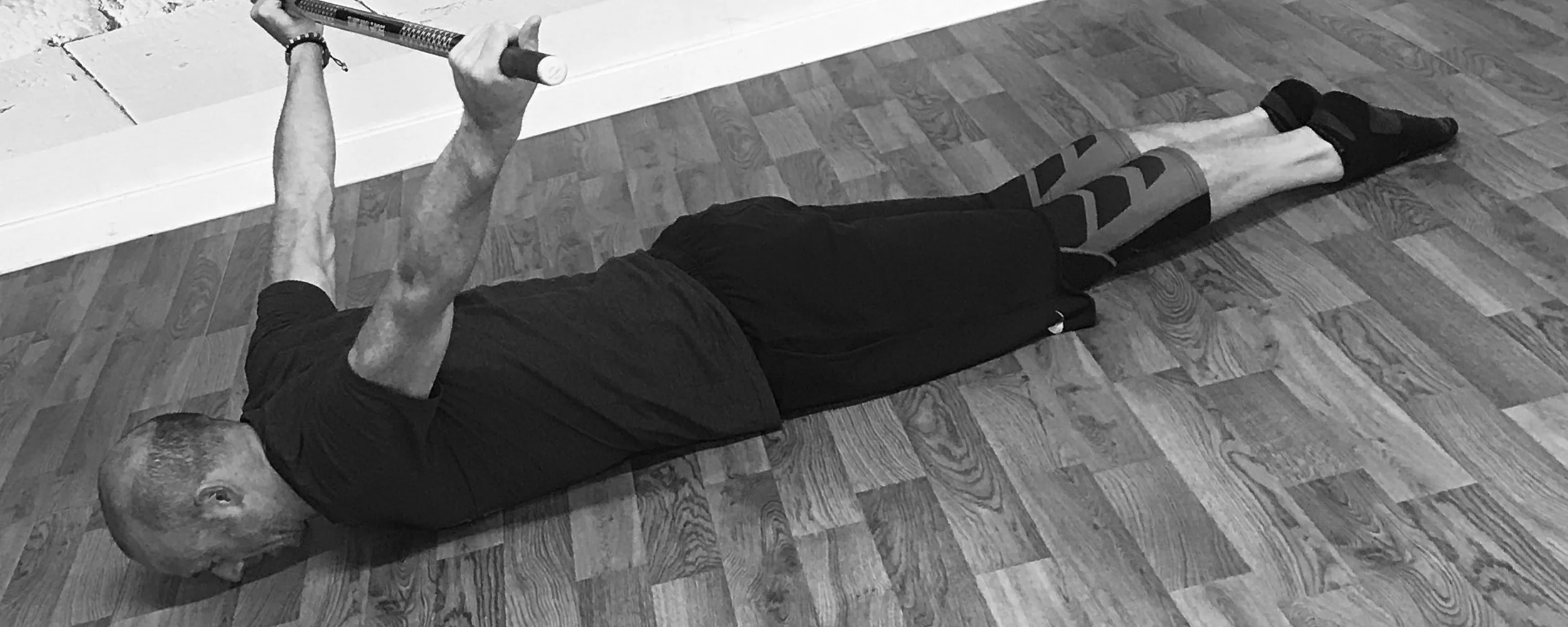The shoulder is one of the most complex joints in the body, and also one of the most movable.
Unfortunately this range of motion can cause problems for a lot of people. Partly due to joint stiffness and muscle tightness, due to hunching over a desk at work all day, and partly due to the instability of the joint. It’s the combination of this instability and tightness that can lead to a greater risk of shoulder injuries, not just in the tissues but the actual joint itself.
Shoulder dislocations are a great exercise for this very reason, and in my opinion for overall shoulder health they are a go-to exercise.
WHAT ARE THEY?
Shoulder dislocations are an awesome exercise for helping to increase the mobility and range of motion in the shoulder joint. The are also extremely useful for preparing and warming up the shoulders for any overhead movements. I always use some form of variation of shoulder dislocations before any handstand work or overhead pressing action because it involves working the scapula through elevation, depression, protraction and retraction. These different movements are key in strengthening the scapula to help create stability for the arm and shoulder joint, whilst also helping to protect against injuries.
“I’ve made the mistake of dismissing the importance of shoulder health and have paid the price. Trust me when I say you need to look after those shoulders!”
In the two clips below I perform the exercise in a prone position, i.e lying down on my front, rather than stood up. In Vid. 01 I’m demonstrating the exercise with a overhand grip, where as in Vid. 02 I’ve switched to a reverse grip. A subtle but key difference.
Vid. 01
Vid. 02
Both of these variations are a slightly more advanced versions on what you would generally see. You may think that these variations are easier due to the supposed shortened range of motion, but they are both much more difficult as the movement is initiated where your muscles tend to be the weakest. You also can’t generate any momentum, so your traps get worked much more than the easier standing upright version.
TIPS
Start with a very wide grip on your first set.
Narrow your grip after each set until you reach a sticking point where you can’t complete the movement smoothly. Take the grip a fraction wider and finish the set.
Never force your way through a sticking point. Work to the sticking point, and try to go a little further on each rep. Over time, you’ll be able to do the full range of motion.
Keep your arms straight and work with the range of motion you have. If you can’t complete the movement, either go wider, or perform it with a band or towel that has some flexion in it.
Try not to arch your lower back when you perform the exercise standing up. Keep your pelvis neutral and tense your glutes and abs.
Perform the exercise at a steady pace. Don’t accelerate the movement at any point.
So there you go. Shoulder dislocations. One of the best exercises you can use for shoulder health and injury reduction. But not the only….

